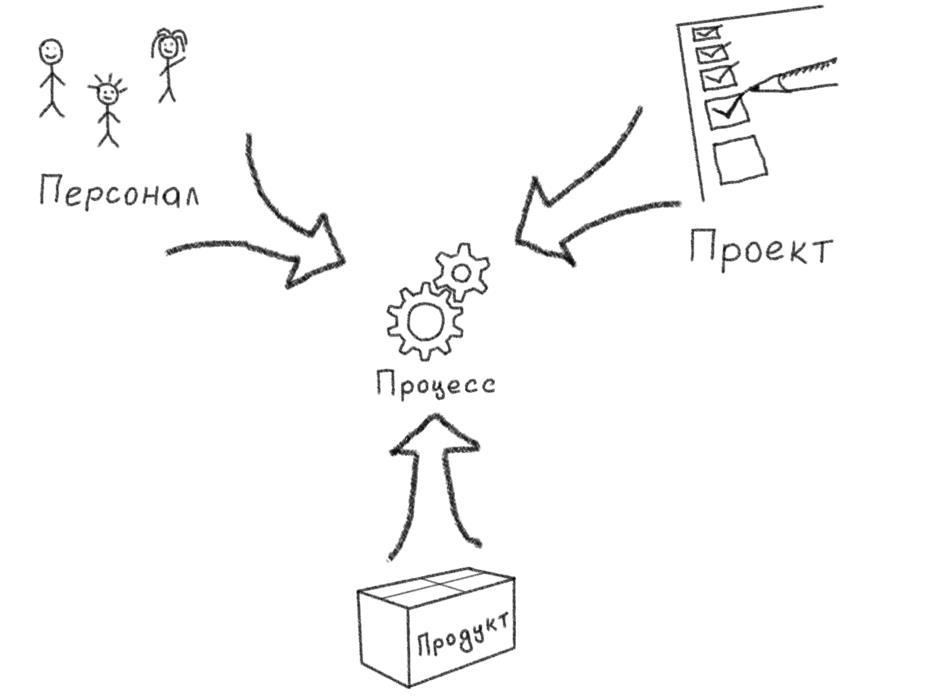McDonald's methods do not work, what to do?
Introduction
Life is such that I have been developing software for almost forty years. Like many, he also dreamed of a software pipeline, a factory and industrial development, and even participated in attempts to bring them to life. The reality of these dreams killed and forced to admit that programming is different from industrial production and in it the management methods of McDonald's do not work.

Why are McDonald's methods not working?
Former management practices come from our industrial and agricultural past, where one day was very similar to another. Efficiency depended on the coordinated work of the masses. The work did not require much ingenuity. “Total control”, “rationing”, “gingerbread and carrots”, “human resource is a“ cog ”that can be easily replaced” are the main principles of effective management of previous eras. The more strokes oars per unit of time, the faster the galley goes, the more efficiently the rowers!There are few repetitive tasks in programming, there is no place for reproductive activity. After the third repetition of the same type of action, the programmer writes a utility that automates this action once and for all. Or finds Code monkey (sometimes it is more profitable).
')
No one knows what place the programmer thinks and how he does it by this place. Intellectual creativity cannot be rationed and controlled. It makes no sense to plant behind the programmer of the taster-controller with a stopwatch. What will he see and measure?
Anyone who tries to try on the methods of managing fast food to develop software is doomed to failure.
Cult cargo

Due to the fact that industrial management methods were not effective, software development has become a forge of innovative approaches to production management. Waterfall, PRINCE2, CMMI, Oracle CDM, RUP, MSF, SEI PSP / TSP, Agile family (XP, Crystal, Scrum, ASD, FDD, etc.) is just a small list of what was invented and tested in our industry and enriched the practice of project management. If in the 4th edition of PMI PMBOK there was not a word about agile approaches, then in the 5th version there were 10 mentions.
Belief in the fact that there is a single correct process, has forced the industry to go through “methodological insanity”. The boundless faith of leadership in the methodology with a capital “M” is a comprehensive theory of how to solve the entire class of problems arising in the production process. “The methodology was created by smart people, and the performers are incompetent!” The methodology makes all the decisions, people do not make decisions at all. All processes must be regulated. Everything should be done according to the instructions. Experiments are prohibited. The methods used are limited. Total control of compliance with the regulations. Implement a comprehensive KPI. A large proportion of "Sisyphean labor".
Does not work.
Statistics show that the success or failure of projects does not correlate with the methodologies used in them. Projects that are managed according to the “how-to” methodology, RUP, agile, or CMMI level 5 fail equally well.
People define everything.
What to do?
The fact that there is no one correct software development process means that in each new project the process must be determined anew each time, depending on the project, product and personnel, in accordance with Law 4 of the P: product + project + staff = process .

Figure Cartmendum
Completely different processes should be applied in projects in which 5 people participate, and in projects in which 500 people participate. If the product of the project is a critical software, for example, a nuclear power plant management system, then the development process should be very different from the development, for example, of the site “rest.” And, finally, the process of developing a team of yesterday’s students and a team of successful professionals should be organized in different ways.
Moreover, the team that started the project does not remain unchanged, it goes through certain stages of formation and, as a rule, grows quantitatively as the project develops. Therefore, the process must constantly adapt to these changes. The main principle: not people should be built under the selected process model, but the process model should flexibly adapt to a specific team in order to ensure its highest efficiency.
Conclusion
A modern enterprise is obliged to treat its employees as well as its best customers. The main capital of a modern company is knowledge. Most of this knowledge is inseparable from their carrier, man. Those enterprises that do not understand this, will not survive because they can not be effective.
Today, an effective enterprise is a service. The enterprise, on the one hand, provides services and products to its customers, and on the other, jobs for hired personnel.

The principles of “One enterprise for life”, “Work productively, and the enterprise will take care of you” - quickly disappear. Look at the IT labor market - the rules are set by professionals. Few people are interested in which companies you have worked for, but everyone is interested in which projects you have participated in and your contribution to their success.
The goal of an enterprise that strives for efficiency is to make not only its customers happy, but also its employees. The software development project today has not three, but four success factors:
1. Made in accordance with the specifications.
2. Done on time.
3. Implemented within budget.
4. Each team member left work at 6:00 PM with a sense of success.
This fourth success factor must be replicable if the enterprise wants to be effective. A successful project is characterized by a constant feeling by its participants of a sense of satisfaction and pride in the results of their work, of a sense of optimism.
There is nothing more disastrous for the project than the indifference or despondency of its participants.
Source: https://habr.com/ru/post/230783/
All Articles